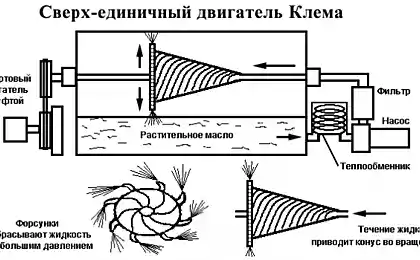497
In substance can be 3, and 500 aggregate states

Traditionally, the physical state of matter dealt with in the framework of their symmetry. Imagine that we are reduced to the size of atoms and sailing in the water column. It is a state with a high degree of symmetry, and everywhere we looked - up, forward or to the left - the picture will be the same. But if the water freezes over, then we are moving in the ice, we see certain patterns: organized in chains and planes of atoms. In different ways, we see different: ice - a state with a lower symmetry.
This view of the aggregate state was proposed by the Soviet physicist Lev Landau and became a powerful tool for a systematic approach to finding the unknown is the possible states of matter. No wonder that for many years it was thought, if they can be found using the concept of Landau and outside the relationship of symmetry aggregate states can not exist.
Eventually discovered new state - plasma, degenerate matter, the Bose-Einstein condensate, and so on. However, in recent decades it has opened such that this paradigm does not fit. For example, in the 1980s Xiaogang Wen and his colleagues discovered quantum systems can exist in different states with equal symmetry. Scientists have shown that these conditions do not differ symmetry and topological order.
This is a quantum characteristic associated not with the symmetry condition and the properties of its wave function. It has nothing to do with the concept of Landau, built in the framework of classical physics. It is suitable to describe the quantum states of matter and transitions between them.
It does not describe the symmetry condition, and arising from it in the network of entangled quantum particles (a unique phenomenon microcosm allowing link two or more particles to each other, so that the change in the properties of one particle instantly affects all other properties). Net of these interactions can not be described by the formulas of symmetry - are required topology.
This new view of the possible aggregate state of matter was more versatile than classical, and allowed to describe more options. However, until now remained some states did topological order is not disclosed. This rare condition can be very necessary for superconductors and insulators for future quantum computers, and to deal with them should.
This work took more than a year - and only at the end of 2012, Wen and his team proposed a clarification of its model, which has swept all states without exception.
Source: www.popmech.ru
via factroom.ru
In Mandarin Chinese there are no words "yes" and "no"
10 interesting facts about the film "Old New Year"























